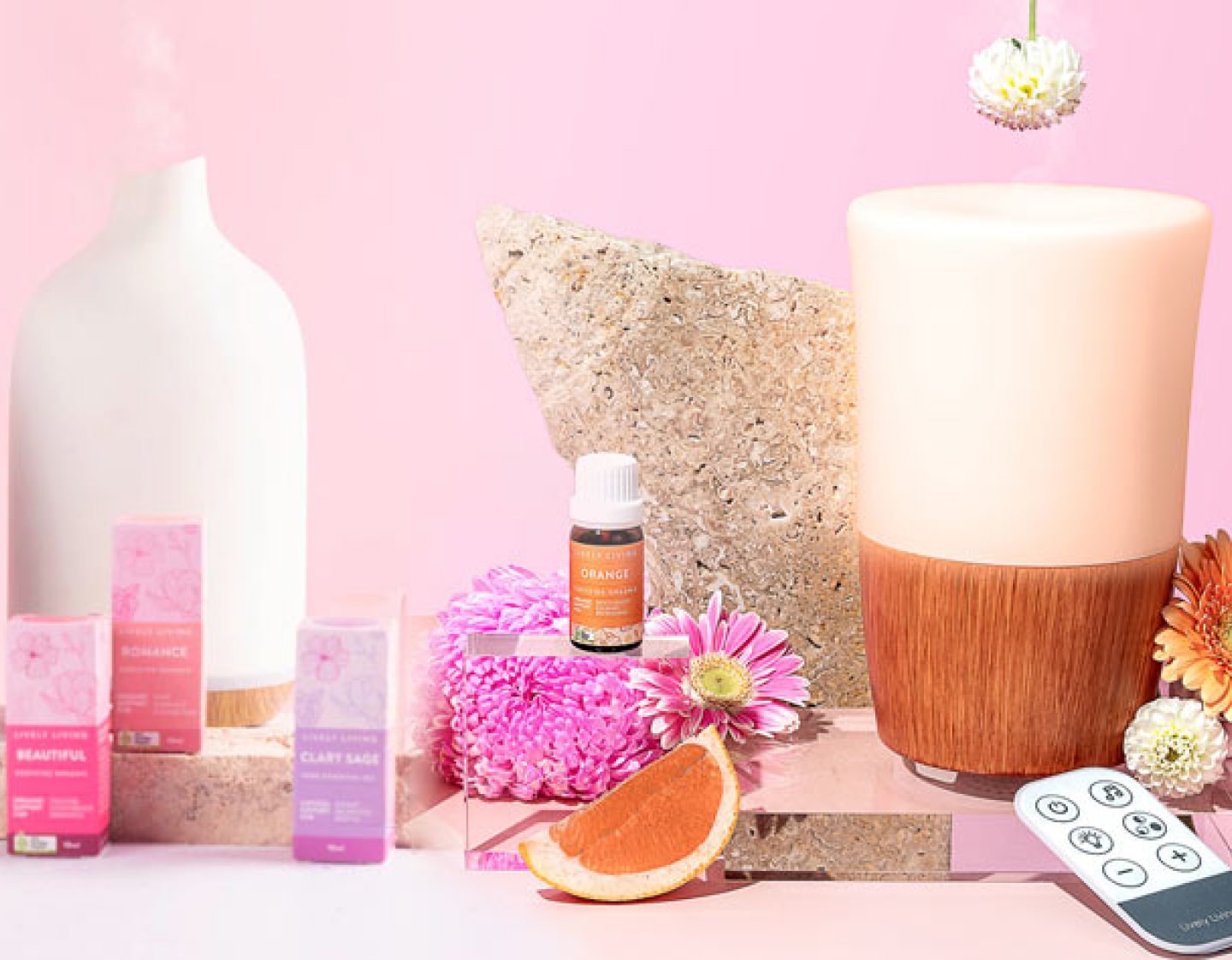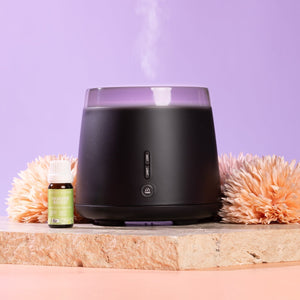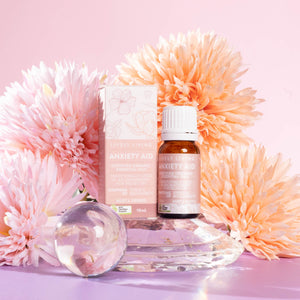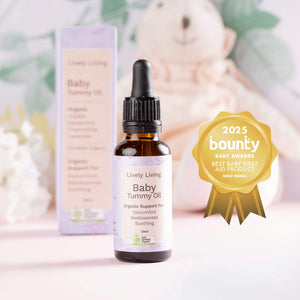Discover How Sandalwood Oil Benefits Skin in Your Routine
You've probably heard whispers about essential oils and maybe you're curious about what they can really do for your skin. It's easy to feel overwhelmed by all the different options out there. But one oil consistently pops up in conversations about glowing, healthy skin: Sandalwood. Many people are discovering the wonderful sandalwood oil benefits skin offers.
This ancient ingredient isn't just about that amazing woody scent; the sandalwood oil benefits skin possess might just be what your routine needs. The health benefits associated with this oil have been recognized in traditional medicine for centuries. It's more than just fragrance; it's about nurturing your skin from the outside in.
Let's explore this beautiful essential oil together. We'll look at its origins, the active ingredients that provide its effects sandalwood is known for, and why it's cherished in many skincare routine practices. Prepare to appreciate sandalwood essential oil in a completely new way.
Table of Contents:
- What Exactly is Sandalwood Oil?
- Why Choose Natural Oils for Your Skin?
- Exploring Sandalwood Oil Benefits Skin
- Which Skin Type Suits Sandalwood Oil Best?
- How to Use Sandalwood Oil on Your Skin
- Safety Comes First
- Emerging Research and Other Considerations
- Conclusion
What Exactly is Sandalwood Oil?
So, what makes sandalwood oil special? This precious oil essential oils users love is typically extracted from the heartwood and sometimes the roots of mature sandalwood trees. Several species are used, but the most famous are Indian Sandalwood (Santalum album) and Australian Sandalwood (Santalum spicatum).
Indian Sandalwood, often called East Indian sandalwood, originates from the Santalum album tree, historically found primarily in southern India. It is revered for its rich, sweet, woody aroma and high concentration of beneficial active compounds. Unfortunately, the Indian sandalwood tree is vulnerable due to overharvesting, making sustainable sourcing critical; the International Union for Conservation of Nature lists Santalum album as vulnerable.
Australian sandalwood, from the Santalum spicatum species native to Western Australian regions, offers a slightly different aromatic profile, often described as greener or sharper, but still holds significant therapeutic properties. Another variety is Hawaiian sandalwood (Santalum paniculatum), known locally as 'iliahi, which is also gaining recognition. Each type offers subtle differences, but the core oil benefits remain consistent.
The process to produce sandalwood oil requires patience and skill. Mature trees, often several decades old, are harvested, and the wood is ground into fine chips or powder. Steam distillation is the most common method used to extract the oil; steam passes through the wood material, vaporizing the volatile aromatic compounds, which are then cooled and collected as the precious sandalwood oil.
The resulting sandalwood essential oil, sometimes referred to as album oil when from Santalum album, possesses a scent unlike any other. It's rich, creamy, and deeply woody, often carrying a gentle, persistent sweetness with balsamic undertones. This complex fragrance profile makes it a staple in perfumery and aromatherapy, cherished for its grounding and calming effects.
Beyond its captivating aroma, sandalwood oil is packed with natural active ingredients thought to support well-being. The key active compounds are sesquiterpene alcohols, primarily alpha-santalol and beta-santalol. Alpha-santalol, often making up a significant portion of the oil (especially in Indian sandalwood oil or East Indian sandalwood oil), is extensively studied for its calming, anti-inflammatory, and potential anticancer effects.
This high concentration of alpha-santalol (sometimes contextually called al sandalwood) contributes to the oil's reputation for promoting relaxation and mental clarity, making it popular in meditation and spiritual practices. Traditional medicine systems, like Ayurveda, have long utilized sandalwood for its cooling properties and to address various ailments. Some traditional uses also point to its potential for easing physical issues, although scientific validation is ongoing for many historical applications.
Why Choose Natural Oils for Your Skin?
More individuals are gravitating towards natural options in their daily lives, significantly impacting skin care choices. Many are moving away from complex synthetic formulations found in some commercial care products. They are instead exploring the gifts nature provides for maintaining skin health.
Essential oils, extracted directly from plants, represent gentler alternatives for many people. When correctly diluted with a suitable carrier oil, they generally lack the harsh chemicals or fillers present in some mass-produced creams and lotions. This makes them attractive for those wanting a simpler, plant-based approach to their skincare routine.
Exploring Sandalwood Oil Benefits Skin
Is Sandalwood Essential Oil genuinely good for your skin? The answer is a resounding yes. It stands as one of the most highly regarded essential oils in modern skincare, valued for its multifaceted benefits that cater to various skin needs.
Calms Inflammation
One of the most celebrated sandalwood oil benefits skin receives is its potent anti-inflammatory power. This capability makes it highly effective for soothing irritated inflammatory skin conditions. Think about common issues like eczema, psoriasis, rosacea flare-ups, or general dermatitis.
When your skin feels red, itchy, swollen, or generally uncomfortable, sandalwood oil can provide significant relief. Its active compounds, especially alpha-santalol, work to reduce the underlying inflammation driving the discomfort. This gentle yet effective action makes sandalwood album oil a valuable ally for calming troubled, reactive, or inflammatory skin disease conditions.
Fights Unwanted Microbes
Sandalwood also demonstrates notable antimicrobial activity. This means it can help combat certain bacteria, viruses, and fungi that can cause skin problems. This is particularly useful for individuals dealing with acne breakouts or minor skin infections.
By inhibiting the growth of these microbes, sandalwood oil helps maintain a cleaner skin environment. It supports the skin's natural barrier function against microscopic invaders. This action contributes significantly to achieving and maintaining a clearer, healthier complexion, positioning it as a useful therapeutic option.
Rich in Antioxidants
Your skin cells face a constant barrage from free radicals. These unstable molecules originate from environmental sources like pollution, UV radiation, and internal factors like stress. Free radical damage accelerates the aging process, leading to visible signs like fine lines, wrinkles, and loss of elasticity.
Sandalwood oil is a source of powerful antioxidants. These beneficial compounds neutralize harmful free radicals, offering protection to your skin cells against oxidative stress and damage. Regular use, as part of your skin care regimen, could help preserve a more youthful appearance and enhance skin resilience.
Helps Heal Skin
Have you experienced a small cut, scrape, or an annoying insect bite? Sandalwood's natural antiseptic properties are beneficial in these situations. It helps to cleanse the affected area, reducing the risk of infection setting in.
This cleansing action supports the body's natural wound healing process. Some evidence suggests it might also aid in minimizing the appearance of scars after the skin has fully recovered. Think of it as a gentle first-aid assistant derived directly from nature, contributing to faster and cleaner skin repair.
Delivers Serious Moisture
Dry, flaky, or dehydrated skin can feel uncomfortable and look dull. Sandalwood oil functions as an excellent emollient and moisturizer. It penetrates the skin to deliver deep hydration, leaving it feeling noticeably softer, smoother, and more supple.
Unlike some heavy synthetic moisturizers, sandalwood oil hydrates effectively without typically leaving a greasy residue, especially when properly diluted. This quality makes it wonderful for restoring the skin's moisture balance. Your skin will certainly appreciate the relief from dryness.
Natural Astringent Qualities
If you're looking for ways to give your skin a slightly firmer feel, sandalwood oil can help. It possesses natural astringent properties. This means it can cause mild contraction of soft tissues, helping to gently tighten the skin and diminish the appearance of enlarged pores.
This subtle tightening effect can contribute to improved skin elasticity over time. It might also subtly soften the look of fine lines, giving your skin a smoother overall texture. It offers a gentle way to support skin firmness without harsh chemicals.
Promotes Even Skin Tone
Emerging research and traditional use suggest sandalwood oil might play a role in promoting a more even skin tone. Its primary active ingredient, alpha-santalol, appears to interact with tyrosinase, a key enzyme involved in melanin (skin pigment) production. While more clinical trials are necessary for definitive conclusions, this interaction points towards potential benefits for achieving a balanced complexion.
This could translate to reducing the appearance of redness or assisting in fading dark spots and hyperpigmentation. Individuals striving for naturally radiant and evenly toned skin find this potential aspect very appealing. It holds promise for revealing a clearer glow.
Considering all these remarkable qualities, it becomes clear why sandalwood oil, particularly Indian sandalwood oil or Australian sandalwood variants, is a treasured component in natural skin care products. Whether incorporated into oil blends or used carefully diluted on its own, it provides comprehensive support for healthy, vibrant skin.
Which Skin Type Suits Sandalwood Oil Best?
Sandalwood oil is remarkably adaptable, largely due to its harmonious blend of soothing, anti-inflammatory, moisturizing, and balancing properties. However, since every individual's skin is distinct, considering your specific skin type is wise before integrating sandalwood essential oils into your regular skincare routine. Understanding how it interacts with different skin needs helps maximize the oil benefits.
Sandalwood for Dry Skin?
If you constantly battle dry skin, sandalwood oil could become a favorite. It offers exceptional moisturizing capabilities, helping to deeply hydrate the skin and prevent that uncomfortable tight, flaky sensation. It works effectively to soften rough patches and restore suppleness.
Its anti-inflammatory nature simultaneously calms the irritation that often accompanies severe dryness. For those with dry, cracked areas, sandalwood's regenerative aspect aids in soothing and promoting healing. People managing conditions like eczema or chronic dryness frequently turn to sandalwood album oil for its combined moisturizing and calming effects.
However, if you have a diagnosed skin disease like severe eczema or psoriasis, consulting your dermatologist before starting any new treatment, including natural oils, is important. While botanical therapeutic options can be supportive, professional guidance is crucial for managing complex conditions. Other oils beneficial for dry skin include rich Avocado Oil or nurturing Shea Butter.
Sandalwood for Sensitive Skin?
Yes, sensitive skin types often respond positively to sandalwood oil. Its significant anti-inflammatory properties are particularly beneficial here. These properties help diminish redness and soothe the easily triggered irritation characteristic of sensitive skin.
Sandalwood possesses inherently calming qualities that can ease discomfort and reduce reactivity. If your skin frequently feels inflamed or reacts negatively to various products, this oil might offer gentle, effective relief. Additionally, its moisturizing and antimicrobial aspects help keep sensitive skin hydrated and protected without typically causing adverse reactions.
Sandalwood for Oily Skin?
It might seem counterintuitive, but sandalwood oil can indeed be beneficial for oily skin when used appropriately. Its natural astringent qualities help to gently tighten the skin and reduce the visibility of pores. This action can assist in managing the overproduction of sebum (skin oil).
Sandalwood helps balance sebum production without stripping the skin or clogging pores, which can actually worsen oiliness. It provides just enough hydration for oily skin, supporting a healthy balance. Furthermore, its antimicrobial action helps combat acne-causing bacteria, reducing breakouts and promoting clearer skin, while its anti-inflammatory effects calm irritation associated with acne lesions.
Sandalwood for Mature Skin?
Sandalwood oil is an excellent component of a skincare routine for mature skin. Its rich antioxidant content actively combats free radical damage, a major contributor to visible aging signs like fine lines, wrinkles, and age spots. It helps protect skin health against daily environmental stressors.
The oil's soothing anti-inflammatory action calms any irritation or redness that mature skin might exhibit. It also supports skin cell regeneration, which can lead to improvements in skin tone, texture, and elasticity over time. Importantly, its deep moisturizing effects are crucial for mature skin, preventing dryness and helping to maintain a plumper, smoother appearance.
Other highly regarded oils for supporting mature skin include regenerative Frankincense Essential Oil, precious Helichrysum Essential Oil, and vitamin-rich Rosehip Seed Oil. Combining these in essential oil blends can offer comprehensive support.
How to Use Sandalwood Oil on Your Skin
Ready to experience the benefits of sandalwood oil? Always remember that essential oils are highly concentrated and must be diluted with a carrier oil before topical application. Applying neat sandalwood oil directly can cause irritation.
Here are several straightforward methods to incorporate sandalwood essential oil into your skin care practices:
Using Sandalwood on Your Face
- Use Skin Glow Face Oil from Lively Living: Lively Livings Organci Skin Glwo Face oil is known for its amazin gproperties. it is loved for its premium blend of organic essential oils and base oils.
- Create a Facial Serum: This is very easy. Add just a few drops of sandalwood oil to about 10-15 ml of a suitable carrier oil. Excellent choices known for their own skin benefits include Jojoba Oil (similar to skin's natural sebum) or Organic Rosehip Oil (beneficial for scarring and skin tone). Mix the oils thoroughly and gently massage a small amount onto clean skin nightly, carefully avoiding the eye area and any broken skin.
- Enhance Your Current Skincare: Add one or two drops of sandalwood oil to your usual serving of face cream or lotion. Mix it well in the palm of your hand immediately before applying to give your existing care products an added boost of soothing and rejuvenating properties.
- Mix a Nourishing Face Mask: Combine 2-3 drops of sandalwood oil with natural ingredients such as raw honey (hydrating, antimicrobial) or plain full-fat yogurt (contains lactic acid for mild exfoliation). Apply the mask evenly to your face, leave it on for 15-20 minutes while you relax, then rinse off completely with lukewarm water.
- Use as a Spot Treatment: Properly dilute sandalwood oil (refer to the dilution guide below) with a carrier oil. Use a clean cotton swab to gently apply the diluted oil directly onto specific areas needing attention, like blemishes or spots of redness. Avoid using neat sandalwood for this.
Using Sandalwood on Your Body
- Boost Your Body Moisturizer: Mix several drops of sandalwood oil into your daily body lotion or body butter. Apply generously after bathing or showering, massaging it in well to help lock in moisture and enjoy the calming aroma and skin benefits all over.
- Prepare a Soothing Body Oil: Create a larger batch of diluted sandalwood oil using the recommended guidelines below in a carrier oil like sweet almond or fractionated coconut oil. Use this blend to massage onto damp skin after bathing, or apply it to soothe minor skin irritations, support wound healing for small cuts, or ease discomfort from insect bites.
- Craft Calming Bath Oil Blends: Add 5-10 drops of sandalwood oil mixed with a tablespoon of carrier oil (like jojoba or almond) to a warm bath. Swirl the water to disperse the oil before stepping in for a relaxing soak that benefits both your skin and your senses. You can create lovely essential oil blends by adding lavender or chamomile too.
Important: Dilution Guidelines
Essential oils are powerful substances. Never apply undiluted sandalwood oil (neat sandalwood) directly onto your skin, as this can cause sensitization or irritation. Adhere to these safe dilution rates for healthy adults when mixing with a carrier oil:
| Usage Area | Recommended Dilution Percentage | Drops of Sandalwood Oil per 10ml (approx. 2 teaspoons) Carrier Oil |
|---|---|---|
| General Body Application / Massage | 2% – 4% | 4 – 8 drops. |
| Facial Application / Sensitive Skin / Daily Use | 1% – 2% | 2 – 4 drops. |
Always begin with the lowest recommended dilution, particularly when applying to the face or if you know you have sensitive skin. You can gradually increase the concentration if your skin tolerates it well and you feel a stronger effect is needed. Listening to your skin's response is important.

Safety Comes First
While sandalwood oil is generally well-tolerated and beneficial for skin, sensitivity or allergic reactions are possible for some individuals. This underscores the importance of performing a patch test before widespread use. Apply a small amount of the diluted sandalwood oil mixture to a discreet patch of skin, like your inner elbow or forearm, cover it loosely, and monitor the area for 24-48 hours for any signs of redness, itching, or irritation.
Emerging Research and Other Considerations
Beyond traditional uses and established skin benefits, scientific interest in sandalwood oil continues. Research is exploring other potential health benefits. Some laboratory studies and preliminary clinical trials have investigated the effects sandalwood compounds, particularly alpha-santalol, might have.
Sourcing sandalwood sustainably is also a crucial consideration. Due to high demand and slow growth of the sandalwood tree (especially the Santalum album tree or East Indian sandalwood tree), finding ethically harvested source sandalwood is important. Supporting suppliers who prioritize sustainable practices helps protect these valuable trees for the future.
Conclusion
Sandalwood oil truly offers a wealth of benefits for your skin. Its abilities range from soothing inflammation associated with inflammatory skin conditions and fighting microbes to delivering essential moisture and providing antioxidant protection against premature aging. Understanding the specific sandalwood oil benefits skin needs can guide you in deciding if this essential oil is a fitting addition to your natural skincare approach.
From the revered Indian sandalwood (Santalum album) to the robust Australian sandalwood, this botanical therapeutic continues to be valued in traditional medicine and modern skin care alike. Its pleasant aroma is just the start; the deeper health benefits make sandalwood essential oil a truly special ingredient.




















